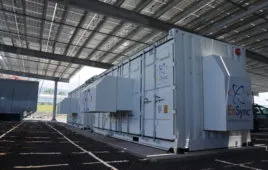Battery costs for commercial market expected to drop 35% by 2024
Oct 26, 2019 08:00 PM ET

According to new research from Wood Mackenzie, non-residential storage system costs will fall by 27% in the United States over the next five years. The fall in system costs will help drive a more-than-tenfold growth in the U.S. non-residential storage market by 2024. Commercial and industrial customers with predictable, peaky loads are increasingly turning to storage to help manage demand charges.
Battery cost declines have been the dominant factor in non-residential system cost declines in the past. However, the next five years will see more progress in balance-of-system (BOS) costs declines than ever before. By 2024, WoodMac expects turnkey BOS costs to decline by more than 20% for non-residential storage systems. Engineering, procurement and construction (EPC) costs and software-driven declines will be key to the fall of BOS costs.

Increasing standardization around system design, efficiencies in engineering and construction, and changes in business models are poised to drive down EPC costs through 2024, said Mitalee Gupta, from Wood Mackenzie’s energy storage team. The increasing prevalence of preloaded containers is one example of system design innovation. These containers make it easier for installation companies to install battery solutions on site. Innovations in storage software will also help reduce BOS costs for non-residential storage.
“The trend of consolidation in the energy storage software market is a strong indication of how important software will be to the market in the years ahead,” Gupta said. “Vendors are increasingly bringing software capabilities in house or focusing more intensely on existing software capabilities. Since 2017 the market has seen a flurry of mergers and acquisitions activity.”
She added that software is becoming more important than ever as utilities begin to use non-residential storage systems for grid services. As well as delivering revenue from storage assets, storage software helps batteries pair more easily with solar.
While the forecast for BOS cost declines is notable due to acceleration versus past years, battery prices for non-residential storage in the United States will also drop significantly, falling 35% by 2024. The expected drop is largely a result of battery manufacturers achieving new economies of scale.
But Gupta added that while BOS costs are falling, certain soft costs remain stubborn.
“Progress in BOS costs for non-residential storage does not include any soft costs associated with interconnection, permitting, customer acquisition, overhead and margins,” she said. “These costs still make up a significant portion of system costs today and no major changes are expected over the next five years in the absence of dramatic policy shifts.”
Also read


